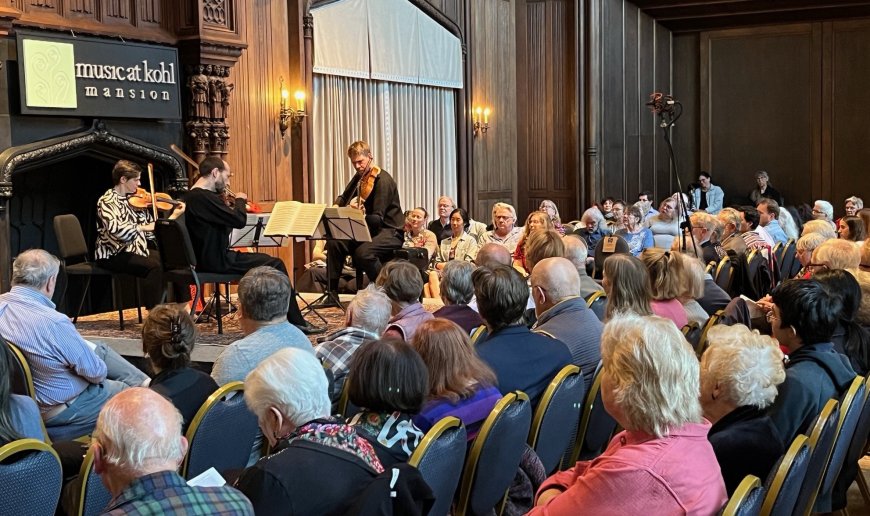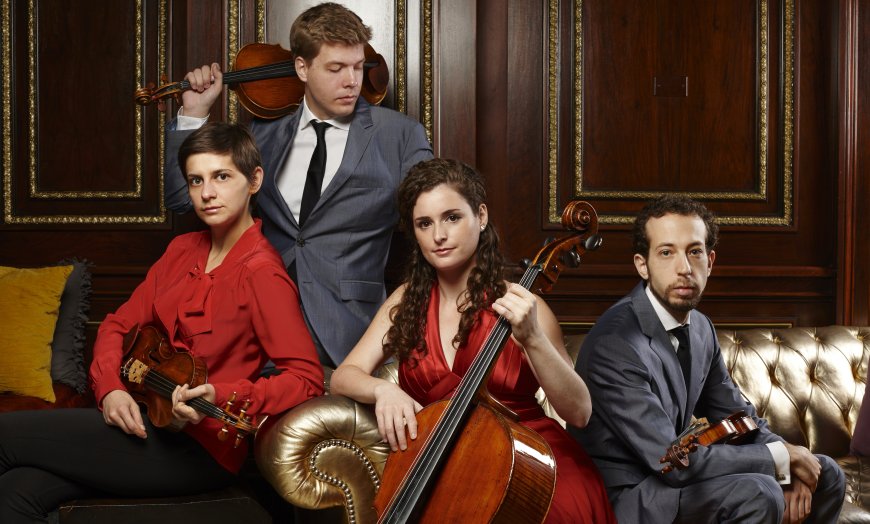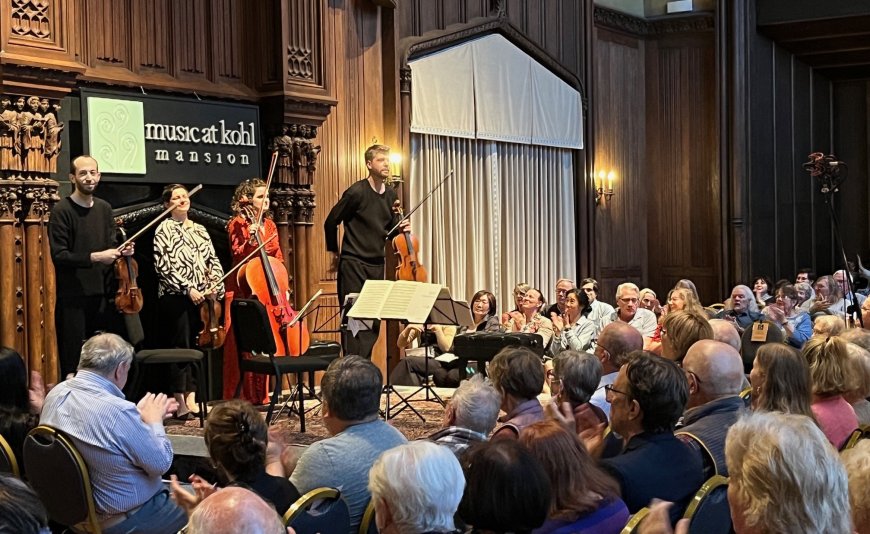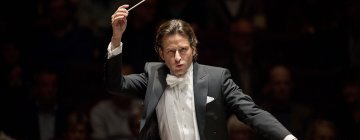
Five years ago, the Ariel Quartet’s concert for Music at Kohl Mansion included possibly the most funereal string quartets in the repertoire: Franz Schubert’s “Death and the Maiden” and Dmitri Shostakovich’s Eighth. The group’s return visit to Burlingame on Sunday, April 13, featured a collection of what might be considered runners-up in that death-haunted competition.
Yet such a label would hardly do justice to the compelling way that this supremely dedicated ensemble presented all three dark and somber masterpieces on its latest program. The group’s repertoire reflected the human need to process our experiences while enduring what the musicians referred to as “yet another round of devastating wars.” As catharsis, then, the concert memorably achieved its goal.
Felix Mendelssohn’s String Quartet No. 6 in F Minor was written in the immediate wake of the death of his beloved sister (and fellow composer) Fanny in 1847 and would be last work that Felix completed before his own premature death six months later. Listeners can hardly perceive the Adagio as anything other than an elegy for Fanny and the other three movements as an expression of Felix’s anguish, even towering anger, at her loss.

In this performance, the Adagio moved along briskly, all of the solos receiving full-bodied accompaniment. Cadences were touching and coyly moving. The other movements burned with wild emotion, each player determined to get the most out of the score. Little touches of gentility only emphasized the drive and thrust of the piece. The finale’s slightly modified anguish was overcome at the end as the ensemble rocketed along at top speed. Mendelssohn’s unquestionable suffering came across as riveting rather than mournful.
Russian-born composer Lera Auerbach’s String Quartet No. 3 (“Cetera Desunt”) was conceived in dialogue with Shostakovich’s Eighth. That’s a work of searing emotion, but Auerbach outdoes it. The opening movement of her 2006 score features huge fuzzy chords of extreme dissonance, overlaying each other in canonic patterns and hardly ceasing. It’s a level of anguish bordering on assaultive.
The seven succeeding movements, all brief, dial this attack down slightly in varying ways, which the Ariel players exploited to intriguing effect. The dissonant introductory chords reappear in more complex patterns or are played by just one or two instruments in a lighter tone color. Some cadenza-like solo passages appear. Auerbach also employs snap pizzicato and the metallic sound of ponticello, techniques more associated with Béla Bartók than Shostakovich. The beginning of the last movement finally achieves a pure, peaceful consonance, but it doesn’t last. A quietly dissonant drone from the cello heralds a resumption of harsher harmony.
However fierce this music is, the performance kept it fascinating. The players were not as wildly expressive as in the Mendelssohn but no less intense and committed. Their dedication conveyed this strange piece effectively.
Benjamin Britten’s String Quartet No. 2, while somber almost to the point of dourness, is hardly anguished or funereal — though the Ariel’s program note did emphasize how the work was composed in 1945, soon after Britten returned from a concert tour of Germany, where he and violinist Yehudi Menuhin played recitals for concentration camp survivors.
The piece’s harmony is tonal if not particularly diatonic, but coming after the Auerbach, this quartet felt like a lake of ingratiating bliss. Britten’s habit of writing for pairs of instruments, the pairs switching off constantly and then breaking apart into chaotic assemblages of four separate voices, let the ensemble members play with individual intensity while nonetheless conveying a strong shared sense of communication, whether their lines matched or not.
The work’s first two movements are fast and busy, with smooth and gentle interludes for contrast. The very long finale is a chacony modeled after Henry Purcell, Britten’s 17th-century predecessor. The Ariel exploited small effects and minute changes of texture to craft a compelling performance. The musicians’ ability to interweave lines, and above all their conviction, evicted any trace of dullness from this slow set of repetitious variations.

Gershon Gerchikov played first violin in the Mendelssohn and Britten; his low, dry tone is unresonant but set off by the strength of his playing. Alexandra Kazovsky was first violin in the Auerbach, but her lighter tone was heard to best effect on second in the Mendelssohn, where she threw herself into the music with an almost alarming physicality. Violist Jan Grüning and cellist Amit Even-Tov were at their strongest when paired in passages in the Britten, their lines merging into a thundering growl. Grüning employed coy lyricism in his solos, while Even-Tov gave piquancy to the cello’s strong bass line.




